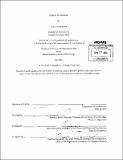| dc.contributor.advisor | Arindam Dutta and Mark Jarzombek. | en_US |
| dc.contributor.author | Chernyakova, Irina | en_US |
| dc.contributor.other | Massachusetts Institute of Technology. Department of Architecture. | en_US |
| dc.date.accessioned | 2013-10-24T17:40:33Z | |
| dc.date.available | 2013-10-24T17:40:33Z | |
| dc.date.copyright | 2013 | en_US |
| dc.date.issued | 2013 | en_US |
| dc.identifier.uri | http://hdl.handle.net/1721.1/81659 | |
| dc.description | Thesis (S.M.)--Massachusetts Institute of Technology, Dept. of Architecture, 2013. | en_US |
| dc.description | Cataloged from PDF version of thesis. | en_US |
| dc.description | Includes bibliographical references (p. 69-75). | en_US |
| dc.description.abstract | The 1972 publication of The Limits to Growth marked a watershed moment in ongoing environmental debates among politicians, economists, scientists, and the public in the postwar period. Sponsored by the Club of Rome, an influential think-tank established in 1968, the report was published against the backdrop of the progressive activism of the 1960s, and prefigured the neo-conservative politics of the 1980s. It represented a decisive moment in that it appeared to reconcile critiques of consumerism and capitalism by linking the limits of global consumption to a finite totality of resources on the planet. As a pre-history to current systems of valuation, this thesis looks at some of the intellectual tendencies that under-girded mindsets such as those manifest in the report. More importantly, it follows the intricate logics and narratives buried within the enigmatic web of geometric symbols and snaking lines that suffuse the writings of systems thinkers, tracing a genealogy of this mode of thought that begins with semiotic language of ecologists Eugene and Howard T. Odum, and of Jay Wright Forrester and the Systems Dynamics Group at MIT, to its manifold ends. These actors will ground the implications of systems theory-in-practice, its implications, and its biases. In doing so, the thesis reconstructs how "environment" was first defined and captured by systems thinking. Navigating through a series of international conferences in which these principles were substantiated, the thesis looks at the ramifications of systems thinking in the present. | en_US |
| dc.description.statementofresponsibility | by Irina Chernyakova. | en_US |
| dc.format.extent | 75 p. | en_US |
| dc.language.iso | eng | en_US |
| dc.publisher | Massachusetts Institute of Technology | en_US |
| dc.rights | M.I.T. theses are protected by
copyright. They may be viewed from this source for any purpose, but
reproduction or distribution in any format is prohibited without written
permission. See provided URL for inquiries about permission. | en_US |
| dc.rights.uri | http://dspace.mit.edu/handle/1721.1/7582 | en_US |
| dc.subject | Architecture. | en_US |
| dc.title | Systems of valuation | en_US |
| dc.type | Thesis | en_US |
| dc.description.degree | S.M. | en_US |
| dc.contributor.department | Massachusetts Institute of Technology. Department of Architecture | |
| dc.identifier.oclc | 859799599 | en_US |
